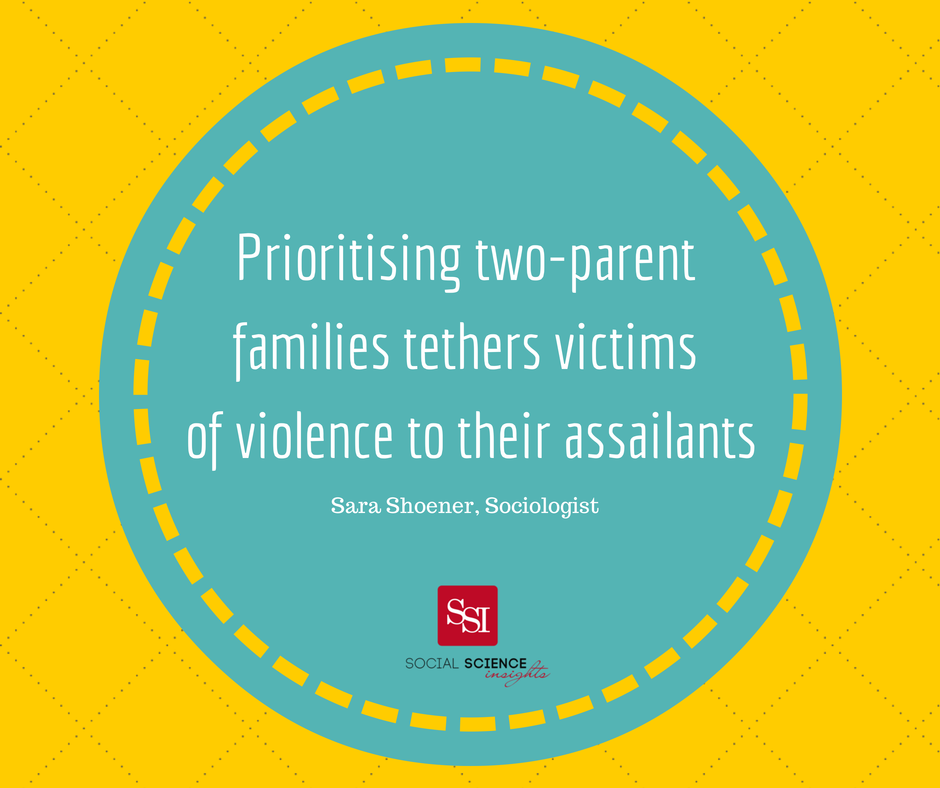
Sociologist & public health researcher, Sara Shoener, critiques the dangerous narrative that positions two-parent households as a protection for women and children from domestic abuse. The Washington Post ran a reckless piece of social science by a conservative sociologist who made this claim based on poor use of statistics. This researcher, writing for The New York Times, has conducted ethnographic research on how the criminal justice system handles domestic abuse cases. Her data illustrate the damage of the two parent myth.
“Prioritising two-parent families tethers victims of violence to their assailants, sacrifices safety in the name of parental rights and helps batterers maintain control. Sweeping rhetoric about the value of marriage and father involvement is not just incomplete. For victims of domestic violence, it’s dangerous… Mental health professionals, law enforcement officials, judges and members of the clergy often showed greater concern for the maintenance of a two-parent family than for the safety of the mother and her children. Women who left abusive men were frequently perceived at best as mothers who had not successfully kept their children out of harm’s way and at worst as liars who were alienating children from their fathers.”
– Sara Shoener, via NYT

Top image & quote, NYT


In Australia the leading cause of injury and death to pregnant women is violence by the intimate partner. Abuse frequently escalates to physical violence when a woman becomes pregnant. ABS study on violence in Australia 2006.
LikeLike
Hi Jane Rakali Thanks very much for your comment; this is a great point to bring into the discussion! I presume you mean the Personal Safety Survey by the Australian Bureau of Statistics (http://goo.gl/gpBs5U). For other readers, this study found that 59% of women who had experienced violence from a previous partner had been pregnant at some stage of their relationship (667,900 women); and of this sub-group, 36% experienced violence during their pregnancy (239,800 women); and 17% reported that the first time their partner was violent occurred while they were pregnant (112,000 women). The dataset aggregates women who are married (49.3%) and in de facto relationships (0.3%), but does not break down incidence of domestic violence by marriage type. Nevertheless, almost two-thirds of women who experienced violence had children at the time (61%) and one third reported that their children witnessed the violence (36%). The data speak to the flawed logic that marriage protects women from violence.
Thanks Jane!
LikeLike